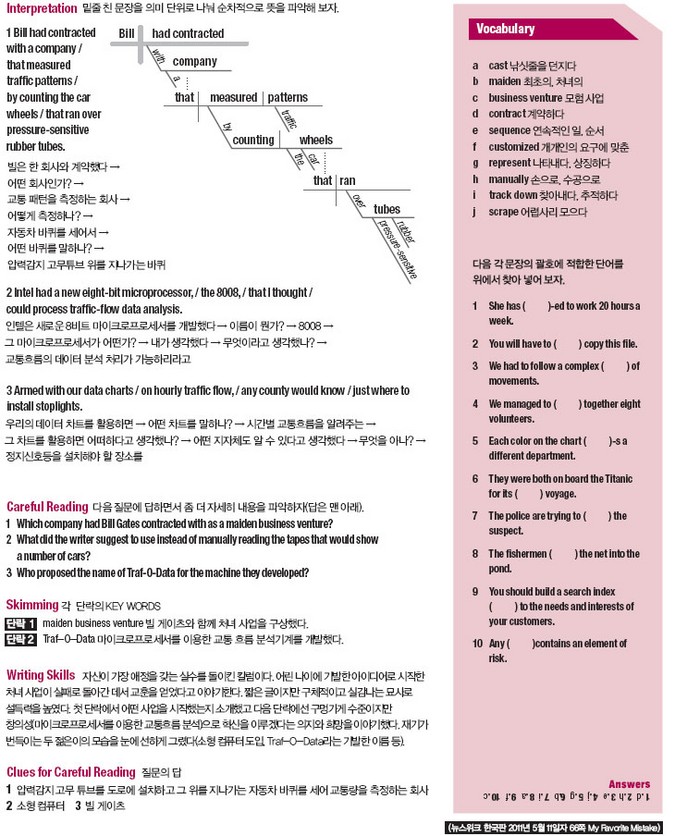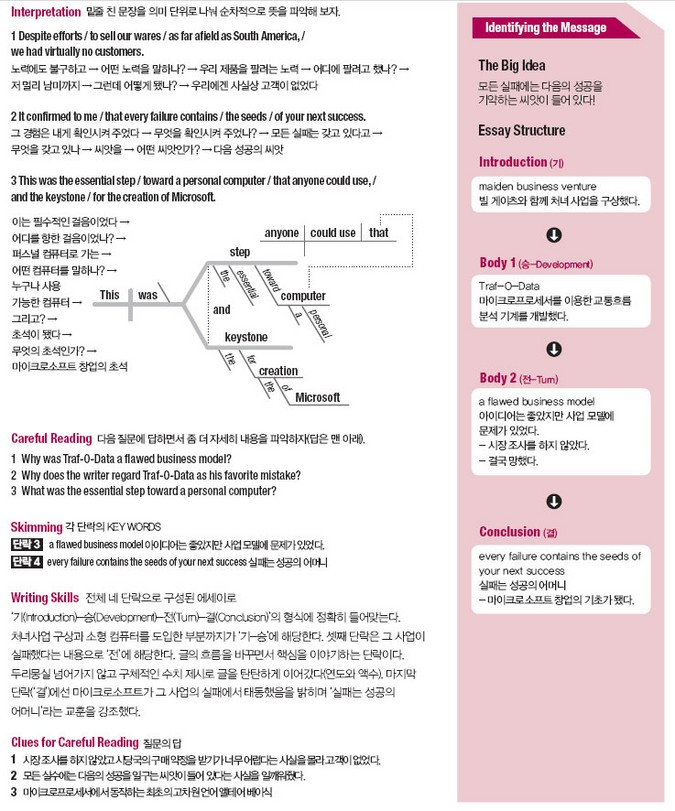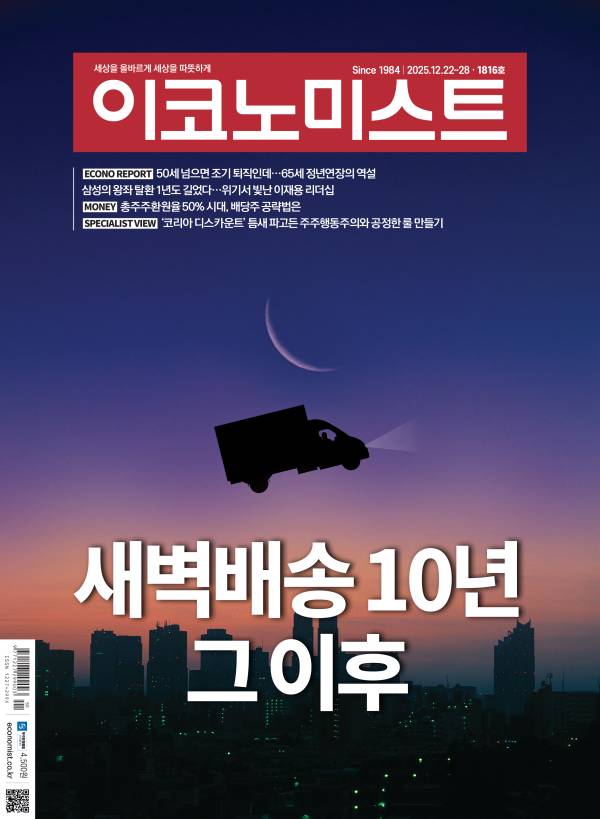- 독해로 배우는 글쓰기

빌 게이츠와 함께 망해먹은 사업
How I and Bill Gates Went Bust
PAUL ALLENIn the summer of 1972, when I was home in Seattle from college and Bill Gates was heading into his senior year at Lakeside School, we were casting for our maiden business venture. ①Bill had contracted with a company that measured traffic patterns by counting the car wheels that ran over pressure-sensitive rubber tubes. Every 15 minutes, a machine would punch a sequence of holes onto a customized paper tape, with each pattern representing a number of cars. The tapes had to be manually read and then repunched onto batch-loaded computer cards.
I wondered instead about using a minicomputer. ②Intel had a new eight-bit microprocessor, the 8008, that I thought could process traffic-flow data analysis. We tracked down an electrical-engineering student, and soon he had a workable sketch for Traf-O-Data, the name Bill proposed. ③Armed with our data charts on hourly traffic flow, any county would know just where to install stoplights or focus road repairs. Bill and I scraped together $360 and picked up an 8008 chip at a local electronics store.


Two years later, we had a working prototype machine (built on a $1,500 budget). There was just one catch. ①Despite efforts to sell our wares as far afield as South America, we had virtually no customers. Traf-O-Data was a good idea with a flawed business model. It hadn’t occurred to us to do any market research, and we had no idea how hard it would be to get capital commitments from municipalities. Between 1974 and 1980, Traf-O-Data totaled net losses of $3,494. We closed shop shortly thereafter.
Since then, I have made my share of business mistakes, but Traf-O-Data remains my favorite mistake because ②it confirmed to me that every failure contains the seeds of your next success. It bolstered my conviction that micro-processors would soon run the same programs as larger computers, but at a much lower cost. It also sparked my idea to simulate the 8008 microchip environment on a mainframe, which led to Altair BASIC—the first high-level language designed to run on a microprocessor. ③This was the essential step toward a personal computer that anyone could use, and the keystone for the creation of Microsoft.

ⓒ이코노미스트(https://economist.co.kr) '내일을 위한 경제뉴스 이코노미스트' 무단 전재 및 재배포 금지










![면봉 개수 → 오겜2 참가자 세기.. 최도전, 정직해서 재밌다 [김지혜의 ★튜브]](https://image.isplus.com/data/isp/image/2025/12/21/isp20251221000019.400.0.jpg)
![갓 잡은 갈치를 입속에... 현대판 ‘나는 자연인이다’ 준아 [김지혜의 ★튜브]](https://image.isplus.com/data/isp/image/2025/11/21/isp20251121000010.400.0.jpg)



당신이 좋아할 만한 기사
브랜드 미디어
브랜드 미디어
조사 중인데…과기정통부 "쿠팡 일방적 발표, 강력 항의"
세상을 올바르게,세상을 따뜻하게이데일리
이데일리
일간스포츠
故 김영대 평론가, 사망 비보…윤종신→정용화 애도
대한민국 스포츠·연예의 살아있는 역사 일간스포츠일간스포츠
일간스포츠
일간스포츠
내일 영하 12도 한파…서울시, 수도계량기 ‘동파 경계’ 발령
세상을 올바르게,세상을 따뜻하게이데일리
이데일리
이데일리
[마켓인]韓 상륙한 글로벌 AC들…“사무실 제공부터 해커하우스 운영까지”
성공 투자의 동반자마켓인
마켓인
마켓인
'특허 장벽에 M&A까지' 美잠식한 템퍼스...K의료AI, 묘수는?
바이오 성공 투자, 1%를 위한 길라잡이팜이데일리
팜이데일리
팜이데일리